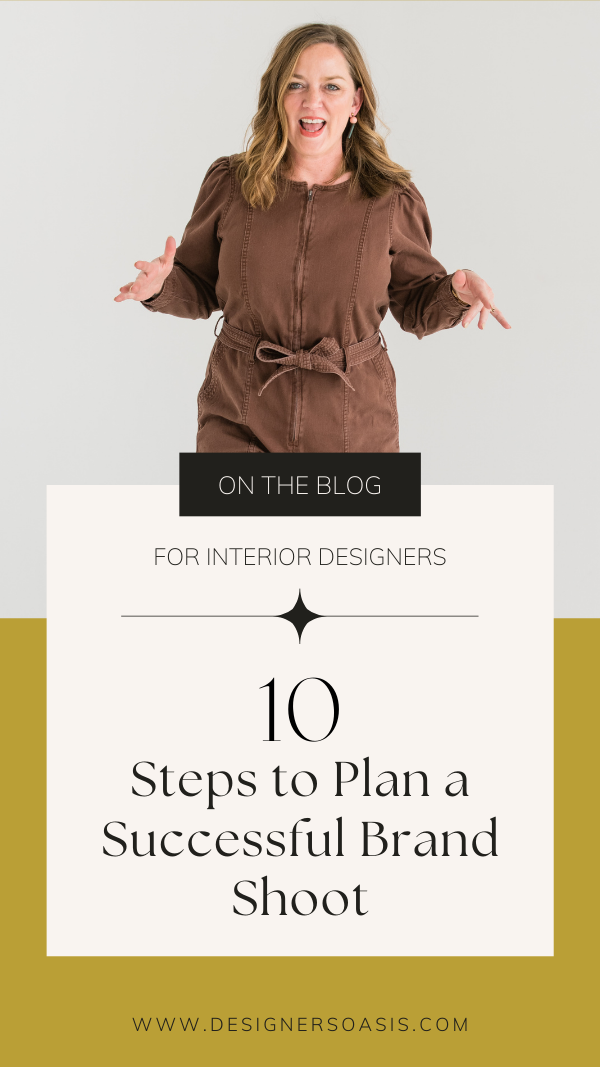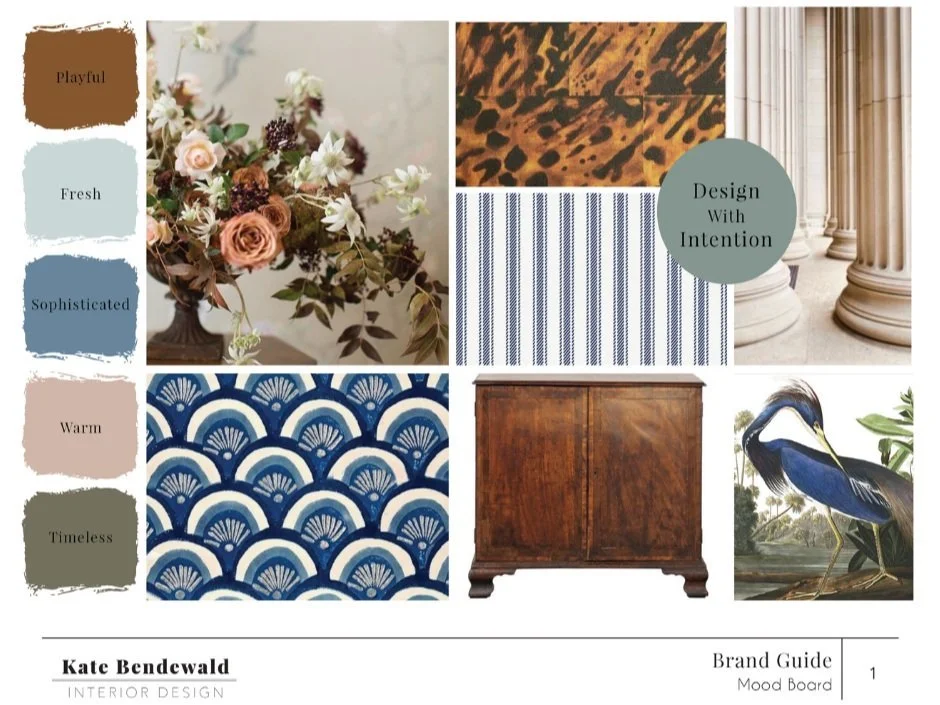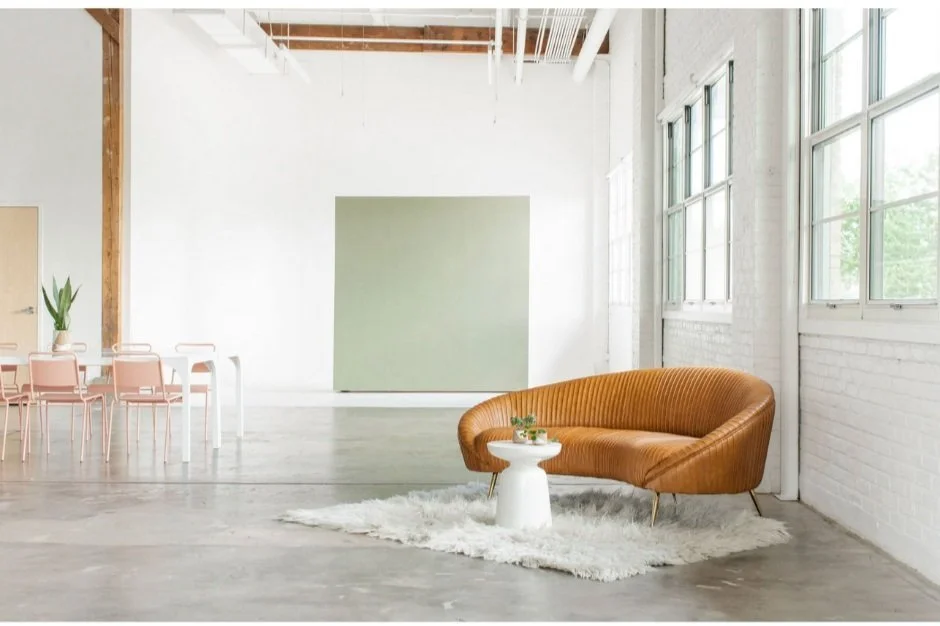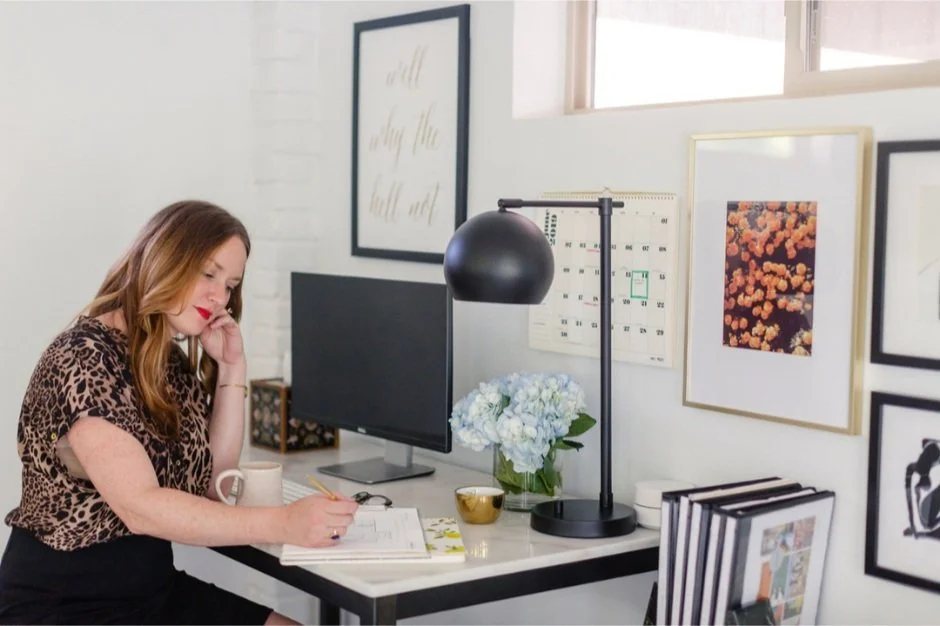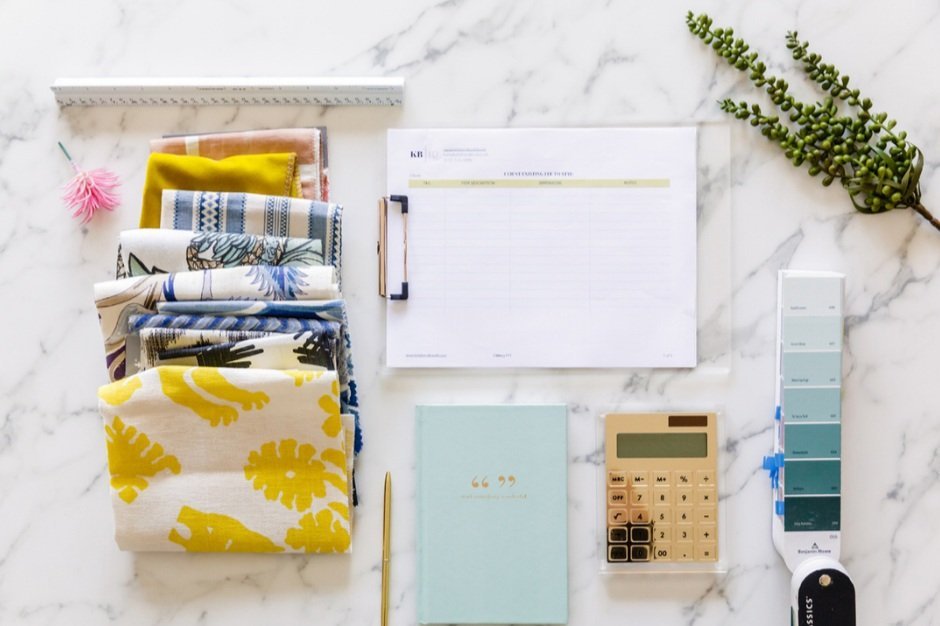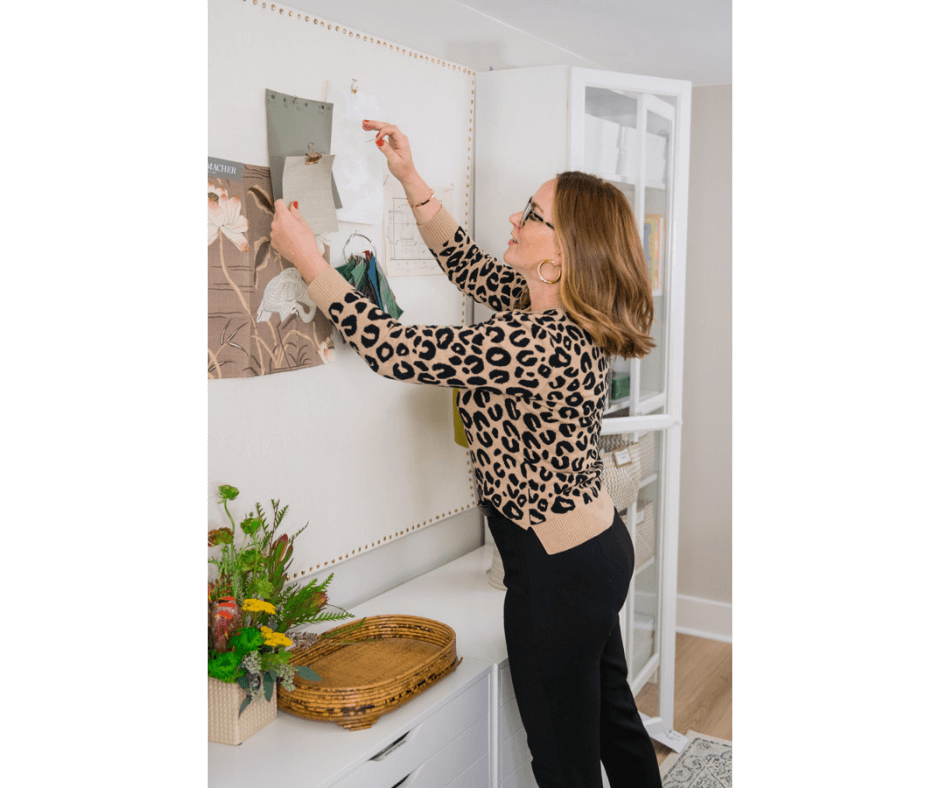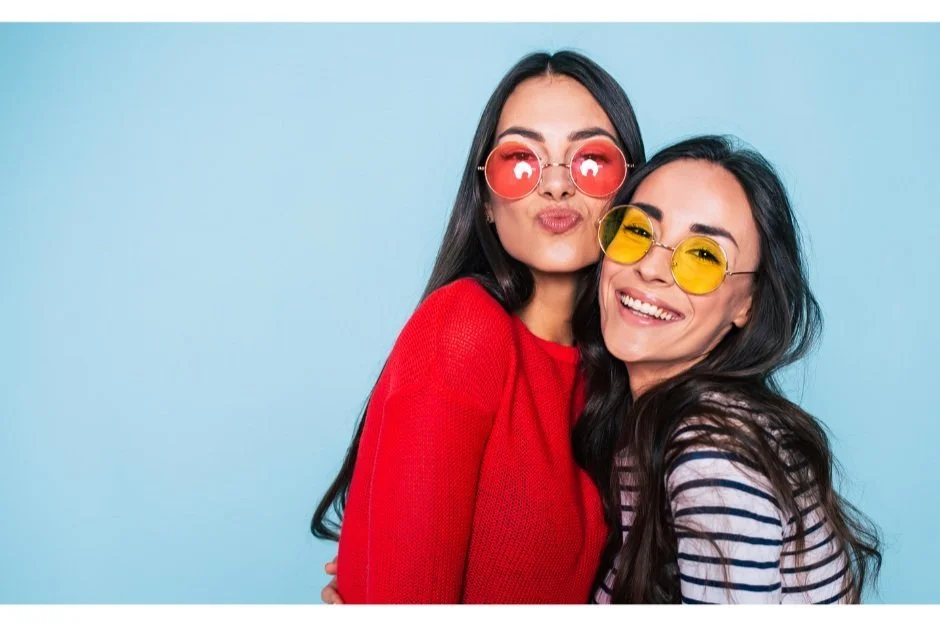10 Steps to Plan a Successful Brand Photoshoot
A brand photoshoot is a great way to get high-quality custom branded photos you can use on your website, social media, and your collateral such as your Services & Pricing Guide and your Client Welcome Package.
It’s more than a headshot. It’s a way to tell the story of what you do as an interior designer. It’s your story. It’s your craft. It’s your brand in visuals.
A brand shoot is a smart investment for your business. Because you will be spending money, it’s wise to put a decent amount of planning into the process. When you do, you’ll make the most of your time with your photographer and walk away with a library of personalized brand photos you use to support your marketing.
Having done several brand shoots myself now, I’ve made improvements and each time it gets easier and less stressful!
#1 CREATE A STORYBOARD
Think about the story you want your brand to tell. Who are you besides a designer? Are you a traveler, a mom/dad, an antiquarian?
What about your signature design aesthetic? Is it modern? Organic? Traditional? Moody? Bright? Playful?
And what services do you provide? Full-service? Color Expert? E-Design?
How can you convey these ideas through photography?
#2 FIND YOUR PHOTOGRAPHER
It’s so important to find someone who shares your vision. Look for someone who knows brand photography. It’s a different skill set than the interior, real estate, or wedding photography.
Know what’s included with their services. Here are some sample questions you might ask:
How many shots can you expect with your package?
What is their turnaround time? (expect at least 2 weeks)
How do they handle revisions?
Do they have any limits to how your images can be used?
How would they use the photos in their own marketing?
Do they have the ability to handle edits like stray hair, etc.?
Also, get a sense of how comfortable you are with them. You’ll want someone who puts you at ease, help you relax, and have fun.
#3 DEVELOP YOUR BUDGET
A brand shoot IS an investment. It’s up to you how far you want to take it in terms of budget, but it doesn’t have to break the bank. Focus on spending the money where it matters most - the photographer! Here are some things to consider budgeting for:
Photographer - Get the best you can afford!
Clothing - Consider borrowing or using a company like Nuuly which I LOVE! Use this link and get $10 off your first month.
Hair/makeup - DIY if you are on a budget or hire someone to do your hair and makeup.
Prop purchases - If you’ll be buying anything that is part of your shortlist such as backdrops for your flat lays.
Location fees - There are studios you can rent for photography.
#4 DETERMINE YOUR LOCATION
Realm Denver
Where you take photos is an important consideration. Think about the stories you want to tell and how that may influence your locations.
Ideally, you’ll have a place with tons of natural light for the best photos. Your office is a great place to get photos of you doing your thing!
But you may also want to convey ideas such as meeting with a client, walking through a construction site, or lifestyle such as showing off your furry design assistant or life as a parent. You’ll also want a well-lit space for taking flat lay photos.
In Denver, we have a beautiful light-filled photography space called Realm that can be rented. If you don’t have a great free space, see if your city has something similar.
Other ideas include A design showroom, renting a co-working space for a day, a completed project site, or your own home.
#5 CREATE YOUR “SHOT LIST”
Your “shot list” is a list you’ll give your photographer to describe the photos you want. It’s a good idea to create a list alongside an example. Peruse Pinterest for examples of the imagery you want such as headshots, working, lifestyle, being boss, being a mom (or dad), and flat lays. (Get a sneak peek of my board)
Always keep in mind the “stories” you want to tell.
Very important! You will want a mix of vertical (portrait) and horizontal (landscape). Vertical shots are well suited for social media while landscape shots are better for websites.
Consider negative space. Come up with a few shots that leave negative space for adding text overlays
#6 PLAN YOUR FLAT LAY IMAGES
Flat lay images are a great way to add content to your brand image library. The idea is essentially to create an arrangement of objects that tell a story or convey an idea.
Here are some ideas to consider for flat lays: Kitchen design, bath design, E-Design, Budgeting, materials selections, timeline, drawings/elevations.
Also, think about the Design Process. How might you create flat lays you can use on your website to convey the steps in the design process?
Once you have your shot list for flay lays, collect your items and arrange them on a large foam core and take your own shot. Give this to your photographer and have the collections organized for the day of the shoot.
#7 DETERMINE YOUR “POSES”
Unless you have a modeling background, posing for a camera can often feel unnatural at first. Do a little Pinterest research and save image poses that you think would feel the most natural and authentic for you. Add these to your shot list.
#8 CREATE YOUR “LOOKS”
Image via See Jane on Instagram
Think about your clothing and accessories and what will not only reflect your brand style/mood but also look good on camera. I did a little research on this to see what photographers had to say. Turns out the answers are all over the board! Wear color - don’t wear color. No patterns and yes to patterns.
I say, wear what reflects you without being too distracting. Think about your background. If you’re shooting in front of a white background, something with a small pattern or color is probably fine. If you’re inside an interior you designed or your office, consider going with solid colors.
Work with your photographer and consider your brand colors to come up with several outfits that will work for you.
#9 ENLIST A FRIEND TO HELP
Having a trusted friend to assist you on your brand shoot day is a tremendous boost to your efficiency and confidence. Not only can they help you keep things organized and tidy, but they can help keep an eye out for things like stray hairs or clothing mishaps.
Your photographer is often consumed with framing the right image or the lighting and may miss these details.
Additionally, a friend who helps you feel relaxed can draw out your most authentic smile.
#10 BE PREPARED
There are a few items you’ll want to have on hand whether you are at home or on-location:
Bluetooth speaker to play the music that sets the mood
Makeup, Hair accessories, brush/comb, hair product
Water
Lint brush
Clothespins, safety pins
Snacks
Hanging clothes bag
And don’t forget the value of a great night’s rest and lots of water. For some people, a brand shoot is exciting and fun and for others, it can create anxiety and stress. If that’s you, consider a massage the night before a good yoga session the morning of.
I hope this list gives you some tips to make the most out of your brand shoot. If done well, you will have a bank of personalized images you can rely on for years to come and will blend beautifully with the other photos in your image bank.
WANT MORE?
GET THE BRAND SHOOT HANDBOOK ONLY IN THE INTERIOR DESIGNER’S BUSINESS BLUEPRINT PROGRAM. GET THE GUIDE ALONG WITH EVERYTHING ELSE THE PROGRAM HAS TO OFFER.
This is a customizable Canva template to help you plan a Brand Photoshoot. The goal is to provide you with a planning tool that can help you stay organized and you can share with your photographer so they are on the same page as you.
The result is a more successful Brand Shoot that gives you a bank of custom images for your website, social media, your Services & Pricing Guide, and your Welcome Package.
25 Customizable Pages including:
What is the intention of your Brand Shoot?
What are stories you want to tell?
Budget Planner
Location Ideas
Prop List
Shot List
Flat Lay Plans
Personal Style Guide
Wardrobe Inventory & Shopping List
Look Book Styles

